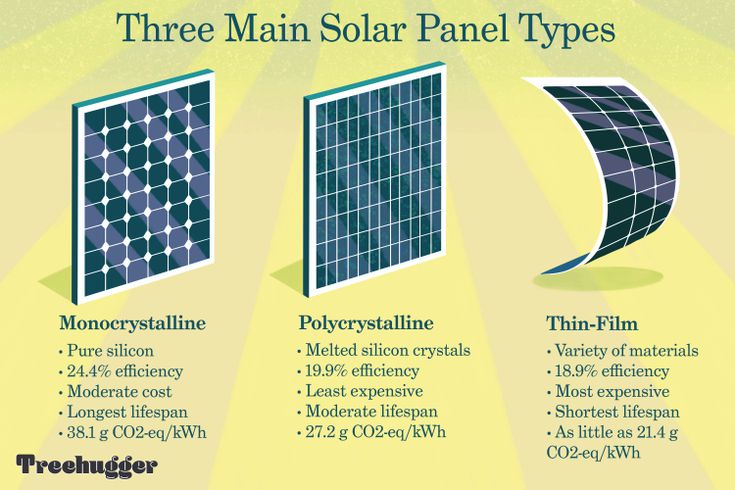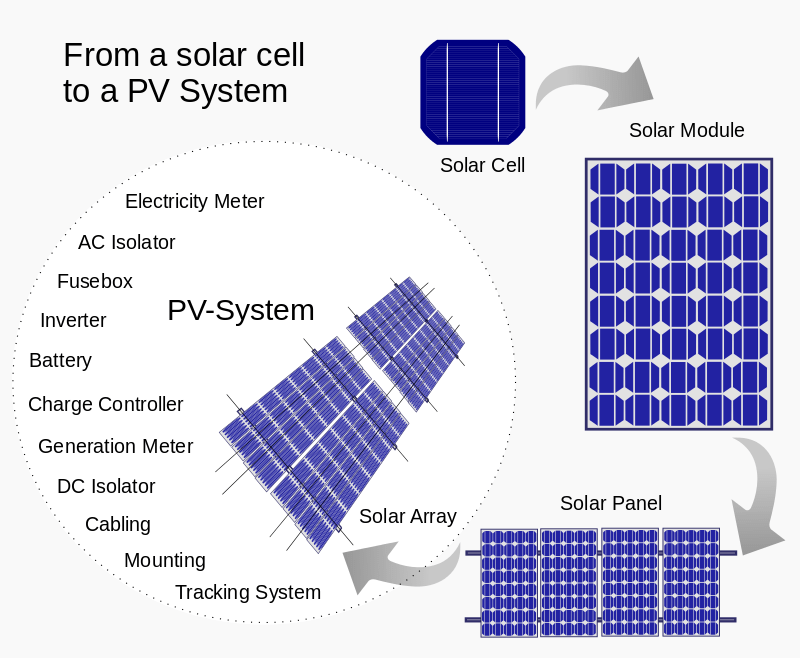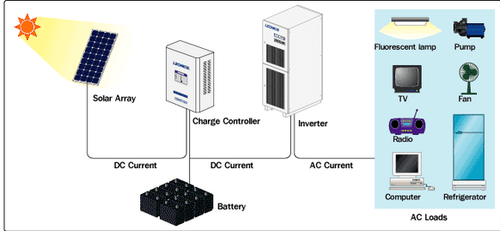Solar Panel Connection Guide
 Basics of connecting solar panels, Is it correct to say that this system must be connected in series or parallel without looking at the data of the solar panel and the charging regulator and making a comparison between them and choosing the best connection?
Basics of connecting solar panels, Is it correct to say that this system must be connected in series or parallel without looking at the data of the solar panel and the charging regulator and making a comparison between them and choosing the best connection?
Of course, it is not possible to immediately judge the method of connection without looking at the electrical specifications of the charging regulator and comparing it with the data of the solar panel, There are scientific and practical bases that we must follow to choose the appropriate connection of panels in accordance with the specifications of the solar system.
What are the basics of connecting solar panels?
An important question and to answer it, here are the following points that determine the priority of connecting solar panels, Such as:
- Determine the number of solar panels.
- Determine the working voltage of the solar panel (Vmp).
- Determination of solar panel voltage at open circuit voltage (Voc).
- Multiply the voltage value (Vmp) by the number of panels, And the output that comes out to us must be in the middle of the voltage range of the solar charge regulator, whereas: The middle value = (the least value + the largest value) ÷ 2.
- Determine the solar panel’s working current (Imp).
But the question: How is the number of solar panels determined?
Determine the number of panels based on the capacity of the solar charge regulator, The capacity of the solar charge regulator is selected according to the capacity of the electrical loads and the total capacity of the available batteries.
If the steps are done sequentially and in coordination between the components, It is not correct to say that we need 10 panels without knowing the loads to be operated during the day and the night loads and the capacity of the solar panel.
An example of the basics of connecting solar panels
First we need to determine the total capacity of the solar panels and their number, Assuming that the required power of the charging regulator is 4000 watts, We want to install 250 watt solar panels. Question Can these panels be installed it? To find out the answer, we need to verify two things:
First command: Calculation of the number of solar panels:
The number of solar panels = the capacity of the charging regulator ÷ the capacity of the solar panel
= 4000 watts ÷ 250 watts
= 16 bars
Second order: Calculation of the total voltage of the panels connected in series:
Since the number of plates is an even number, The voltage of the solar panel (Vmp=30.3V), and the working voltage range of the regulator (120V~450VDC), In this case we should get the mid-field value as follows:
Midfield potential = (min + largest) ÷ 2
= (120 + 450) ÷ 2
= 285 volts
Number of panels to be connected in series = Midfield voltage ÷ Panel working voltage (Vmp)
= 285 ÷ 30.3 = 9.4
So we need to connect at least 9 plates in series to get an output close to the middle value
Total voltage of series connected panels = Number of panels connected in series x voltage of one panel
= 9 x 30.3 = 272 volts (which is close to the middle value of 285 volts)
So the number of 18 solar panels should be divided into strings: Each string has 9 panels connected in series, The two strings are connected in parallel to obtain a power of 4500 watts.
Check the connection of the solar panels
In your opinion, is there a mistake in designing and calculating the number of panels, even though the efforts and method of delivery are correct, Did you notice that?
We talked in the first step that the number of panels we need 16 panels to get a power of 4000 watts, But in the second step, the number of panels increased to 18 panels with a yield of 4500 watts, This is a value greater than the capacity of the charging regulator by a difference of 500 watts only.
But do you think that is possible? Is there any harm to the regulator or not? Of course, 16 solar panels cannot produce exactly 4000 watts of power, but less than that. The presence of ambient weather factors and system efficiency, And other things that reduce the productivity of panels.
It is preferable to choose solar panels so that their capacity does not exceed 4200 watts as a maximum for several factors, including: O no: A small increase of 200 watts will compensate for the losses caused by the solar panels, And the second factor: The point is that no additional initial costs are required to install two additional 500W panels that are not required in the system.
Important note: Using the steps explained in the article, you can calculate different capacities of the panels based on the data of the charging regulator and note the changes that may occur.
And leave us in the comment what is the most suitable capacity of a solar panel? And what is the required number? And the best connection to the solar panels? Inverter Model: Axpert Max 3.6KW.
How to choose the right solar panel?
How to choose the right solar panel? A question asked at the moment of designing a solar system is to choose the capacity of a specific panel from among the dozens of different capacities available on the market.
In this article, we will learn about the basics that must be followed in order to choose the most suitable and best solar panel for the solar system.
How to choose the right solar panel?
The capacity of the solar panel is selected based on the following points:
- According to the efficiency of the solar panel for the purposes of the available space on the roof of the house.
- Depending on the voltage at which the solar charge regulator operates, As well as the current that can be absorbed.
- Depending on the capacity of the solar charge regulator.
- Solar panel cost.
In line with what has been said, These points determine how to choose the required solar panel in terms of capacity and number. And the method of connecting the panels based on the voltage field of the regulator and the maximum current it can withstand. We will discuss each point in as simplified language as possible.

Solar panel efficiency
We have to compare the efficiency of the solar panel with the surface area, The higher the efficiency, the smaller the panel area with the same productive capacity. This enables us to exploit the largest amount of energy with the least area of the roof of the building.
Example: We have two boards with the same power, but one of them is more efficient than the other, This means that the higher efficiency panel will ensure that we get more electrical power with less space, This lowers the number of panels for us, and optimum utilization of productivity.
Charging regulator working voltage and maximum current
It is the second factor that determines the methods of connecting solar panels, We also have to choose a solar panel with a suitable Vmp voltage, So that we get a value close to the value of the mid-voltage of the regulator if several solar panels are connected in series.
You can also find in the inverter data sheet the value of the maximum current that it can withstand from the total current of the solar panels, This obligates us not to exceed connecting more than one or two series of solar panels in parallel.
charge regulator capacity
It is important to know the capacity of the charge regulator so that you can determine how many panels you need when choosing the capacity of a specific solar panel, That is, if the capacity of a solar charge regulator is 1000 watts, The power of the solar panel is 250 watts. Then we need four panels to get 1000 watts of power.
solar panel cost
Some may choose solar panels from the old versions or to be used, Others prefer to buy the best in terms of efficiency, size and performance, It all comes down to the budget that the solar system entrepreneur has.
Therefore, this is a very important point because it determines the effectiveness of the system and the optimum utilization of electrical energy productivity within a limited area of the roof of the house.
Basic criteria for choosing solar panels

Basic criteria for choosing solar panels, In this topic, we will talk about important points that we must pay attention to before making a purchase regarding the basic criteria for choosing solar panels.
What are the criteria for choosing solar panels
Before buying a solar panel, we must consider the following points:
- The permittivity of the output capacity of the solar panel.
- Solar panel efficiency.
- Solar panel warranty.
- Solar Panel Certifications.
- The mean operating temperature (NOCT).
- Thermal treatments of the solar panel.
- solar panel type, Do you need a traditional board or a half-cell board?
Tolerance of the output capacity of the solar panel
As we know that each solar panel has a specific capacity which is written on the data card, For example, if the power of the solar panel is 330 watts, Does this mean that the power of all the produced models has an electric power exactly identical to the power of 330 watts?
of course not, Its production capacity may be slightly greater or slightly less than the value recorded on the statement card. The permittivity may be +/-5W, This means that its output value ranges from 325 watts to 335 watts.
Tolerance may be positive only, This means that the capacity is not less than the rated capacity, but rather increases.
Solar panel efficiency
Means the percentage of electrical power produced by the solar panel to its surface area under standard test conditions at solar radiation of 1000 watts per square meter, The higher the efficiency ratio with less board space, the better.
Solar Panel Warranty
Most manufacturers put a 10-year warranty on the product and workmanship defects. A written guarantee of 90% for the first ten years and 80% for the period of 25 years.
There are some companies that raised the percentage of the warranty on the product for a period of 12 years, And a performance guarantee of 85% to 90% for 25 years.
Solar Panel Certification
We have to make sure that the international standard certifications (IEC 61730 and IEC 61215) mentioned in the plate and manufacturers data sheet are correct.
Average Operating Temperature (NOCT)
Most of the nominal electrical values recorded on the solar panel data card are at 25°C, But in reality the panels operate at much higher temperatures, Yield fluctuates according to temperature conditions.
Manufacturers set the values for the low yield of the board at 1 degree above 25°C.

Heat coefficient of the solar panel
The parameter determines the percentage of deviation in the values \u200b\u200bof the characteristics of the solar panel such as: Voltage, current and electric capacity, This is when the temperature increases.
This means that the voltage and power coefficients are negative, which means that the voltage of the plate and the power produced from it decrease with the increase in the temperature of the plate. While the current coefficient is positive, That is, the output current increases with increasing temperature.
How to connect the solar panels with the inverter?
How to connect the solar panels with the inverter, An important step that may occur to many about how to properly connect the number of solar panels we have available with the solar inverter without causing any disruption to the solar system.
To begin with, before going into the details of this article, We note that all components of the solar system are linked to each other in the selection process, Therefore, before purchasing the solar panels and the inverter, it is advisable to make a comparison between the components so that we can make the correct and consistent choice among the components of the system.
Steps to connect the solar panels with the inverter
First we have to determine the specifications of the charging regulator inside the inverter, Which is usually written inside the data sheet or on the card on the inverter, Among the important electrical specifications that you must know:
- The maximum capacity of the solar panels that the charge regulator can handle.
- The charge regulator’s working voltage field, Accordingly, it is possible to determine the number of solar panels that must be connected in series so that the value of the voltage of the series panels is in the middle of the field.
- maximum current that the regulator can withstand, Depending on the maximum value we will be able to know how many strings must be connected in parallel, Whereas, one string is a group of panels connected in series.
- The plates are connected in series so that the value of the total open circuit voltage is less than the maximum value of the charge regulator.
As can be seen from the specifications of the “Axpert MAX 3.6KW” inverter charging regulator, the number of solar panels can be determined so that it corresponds to the power of the regulator and that the set of voltages of the panels connected in series should be in the middle of the field, That is, in the range of 260 volts up to 300 volts (since the value of the middle: 285 volts).
Conditions for choosing the right solar panel for the inverter
Not as some think that any board can be chosen, but there are several conditions, namely:
- The process of selecting the number of solar panels is done so that the value of the total power is close to the power of the charging regulator.
- The process of connecting the panels in series is carried out depending on the field of action of the regulator, That is, the series is not connected randomly, but on scientific and practical grounds and according to the specifications of the charging regulator.
- The value of the open circuit voltage of the series-connected group of plates is less than the maximum voltage of the charge regulator.
- If each panel group is connected in parallel with the other group, Make sure that you do not exceed the maximum current value of the charging regulator.
How to connect the solar panels with the inverter?

Here are the following steps to determine the number of solar panels and the method of connection:
- O no: Divide the charge regulator capacity by the available solar panel capacity until you get the number of panels needed for the system.
- Secondly: Sum up the voltages of the panels connected in series, Make sure that the output value is close to the middle of the working voltage range, Otherwise you may need to choose the power of another board with more or less voltage until you get an output close to the mid-field value.
- Third: If the number of panels is large, Divide the number into two equal parts so that the first section is connected parallel to the second, But this process is based on two things: The series connection is carried out depending on the value of the mid-field of the working voltage, Parallel connection is carried out depending on the maximum current that the charging regulator can withstand.
Voltronic Axpert MKS Inverter Series Catalog
Voltronic Axpert MKS Inverter Series Catalog, We present to you the full version of the brochure or catalog of the Voltronic Axpert MKS series inverters.
The catalog contains all the information and illustrations of installation, connection and cabling tips, And other things that you will find inside the catalog or brochure.
Voltronic Inverter Catalog pdf
The catalog aims to make it easier for the user to deal with the Voltronic inverter, In it, you learn about the advantages of the device and the mechanism of the structure of the system in it, It also puts us at the forefront of the catalog with safety and security instructions about the device.
It shows us what types of electrical loads can be operated on the inverter, What are the sources of nutrition that can be connected to the inverter input? Like: Solar Panels, public grid electricity, generator, Electric batteries.
He also puts in it the name of each part of the inverter, What are the additions of high-capacity inverters to small capacities? After that, he explains to us the steps of dealing with the device and what tips are followed during installation and delivery.
There are important tables that you can find inside the brochure and they are very useful, such as: The appropriate battery capacity for the inverter is one kilo and what is the appropriate cable section, The charging current required for charging.
The “catalog” user manual explains with details and illustrations the method of connecting cables to each of the input of the solar panels – the public grid – the electric batteries – the output of the electrical loads.
It also shows us the function of each LED light on the front end of the inverter, What is the function of each control button? What is the meaning of each of the symbols that may appear to us in the reading screen?
It also shows us the conditions of the battery or batteries when loaded on it and the percentage of discharge at low and high load rates.
The most important point in the user manual or catalog is the settings for adjusting the inverter or the software available for programming the inverter, All programs are numbered in an organized and simplified table to facilitate dealing with them. Each program has several options available and an explanation of each of the options.
Finally, you find the cases that may appear on the inverter screen, What are the meanings of the fault codes that may appear? battery charging stages, And a table of malfunctions, their causes and ways to solve them.
Preview and download the Voltronic Axpert MKS Series Inverter Catalog
On our website, we allow you to preview and download the Voltronic Inverter PDF catalog.
Connection between the charging regulator and the batteries
connection between the charging regulator and the batteries, There are important factors that you may find in the specifications of the charging regulator and batteries that determine very important procedures for sizing the cables to be connected between the charging regulator and the batteries.
Based on the foregoing, we know that the cable contains an electrical conductor, either copper or aluminum, But in the majority of solar energy project uses copper conductor, Because it is better in conductivity than aluminum, From this point of view, we will learn about the method of connection between the charging regulator and the electric batteries, And choose the appropriate cable section capable of withstanding the entire charging current and load current.
solar charge regulator
The charge regulator has an important role in the solar system. It regulates the voltage of the solar panels in accordance with the voltage of the batteries. and inverter input voltage, The regulator comes in different capacities with a working voltage of 12V, 24V or 48V.
electric batteries
Electric batteries are an important component of off-grid solar systems. Without it, it is not possible to operate loads of electrical appliances at night or while there are clouds during the day.
The purpose of using electric batteries in the solar system, It is the provision of sufficient power in order to run electrical appliances at night or on independent days (ie, cloudy days).
Sizing the cable section between the batteries and the regulator
In order to choose the right two cables (positive and negative cable), You should calculate the area of \u200b\u200bthe cable cross-section using only one DC law, which we will mention here in the Connecting Regulator and Batteries article. But first, let’s get acquainted with several items that must be taken into account while designing cables, Which:
- Determine the maximum current of the solar charge regulator, Where you can find the value in the data sheet of the regulator.
- Knowing the voltage of the solar system on which the regulator operates, And also the voltage of the batteries just to confirm.
- The charging regulator and batteries should be placed close to each other to reduce the distance as much as possible. Taking care that the distance does not exceed 4 meters.
- The lost voltage in the cables should not be more than 2%.
NB: In small systems, the cable cross-sectional area can be calculated on the basis of the total current of the electrical loads to be operated at night, With a safety factor of at least 1.4 added.
In our next example, we will calculate the cable cross-sectional area based on the maximum current of the charge regulator, To ensure the durability of cables when deciding to expand the solar system, Depending on the current allowed to be reached (which is the maximum current of the charging regulator).
The law used to calculate the area of \u200b\u200bthe cable cross-section between the solar regulator and the batteries is as follows:
Cable cross-sectional area = (1.4 x 2 x current x specific resistance (p) x cable length) ÷ (batteries voltage x voltage drop ratio)
whereas:
1.4: safety parameter.
(p) Specific Resistance: (for copper: 0.01724) / (for aluminum: 0.0277)
important note: The above equation is only used in DC systems and not AC.
An example of determining the area of \u200b\u200bthe cable cross-section
Solar charge regulator specifications: (80A/ 24VDC), The distance between it and the batteries is two meters (2 meters), The maximum allowable loss rate for delivery is 2%. The conductor used in the connection is copper with a specific resistance (p) of 0.01724.
Calculate the cross-sectional area of the two cables (positive and negative) to be connected between the charging regulator and the batteries?
The solution:
data:
- The maximum current of the charging regulator is 80A.
- The voltage of the batteries and the solar system is 240V.
- The distance between the batteries and the charging regulator is 2 meters.
- Allowable loss percentage is 2%.
Cable cross-sectional area = (1.4 x 2 x current x specific resistance (p) x cable length) ÷ (batteries voltage x voltage drop ratio)
= (1.4 x 2 x 80 x 0.01724 x 2) ÷ (24 x 0.02)
= 7.72 ÷ 0.48
= 16 mm2
At least 16mm2 cable cross-sectional area can be selected, Or a 25mm2 cable.
Very important note: Make sure that the length of the two cables (positive cable and negative cable) are the same distance, So as not to cause problems caused by increasing the resistance of one cable than the other.
Adjust the inverter output priority
Adjust the inverter output priority, In this article, we will learn about a very important topic, which is how to adjust the priority of the inverter output, or in other words, how to adjust the priority of the supply source for charging batteries and electrical loads.
The goal of programming
Programming the inverter output priority based on the available options aims to improve the process of charging batteries as well as feeding household electrical loads without any shortage of electricity power source.
Some may face the problem of not fully charging the electric batteries in the winter, The reason is that you are dependent on the programming of the preference of solar panels over electricity from the public grid.
As we know that the productivity of solar panels in winter is relatively low, Thus, placing priority on the panels will affect the process of charging the batteries, because the energy produced is not sufficient, To solve this problem, you need to adjust the priority of the inverter output by placing it on the electricity of the public network or the public network + the sun.
What is the inverter output priority software?
Here are the important settings through which you can adjust the output priority of the Voltronic inverter:
The number one program for the priority of the output source for feeding loads and charging batteries, Among the options available in this program are:
The sun first: appears on the inverter screen with the letters SOL, It means that it feeds the required loads of solar panels energy, In the event that it is not available, The process of feeding is carried out by batteries, And finally, the public electricity grid.
Network First: It appears on the inverter screen with the letters Utl, The electrical loads are fed from the public network as a first priority, The panels and batteries will power the loads in the event of a power outage in the public grid.
Network + Sun: appears on the inverter screen with the letters Sbu, This option works to feed the loads and charge the electric batteries from the solar panels and the public grid together.
Programs No. 12 and No. 13 are related to the return of electricity to the public grid and solar panels, according to the condition of the batteries’ voltage, They are related to the Grid + Sun option, While the program No. 16 is for determining the priority of the battery charging source.

Steps to adjust the inverter output priority
We offer you simplified steps for the process of adjusting the output source priority of the Voltronic inverter, as follows:
First: Pressing the Inter button for three consecutive seconds to enter the inverter settings.
Second: we go to the number one program by using the arrow buttons.
Third: We find the default setting for this program is Network First (Utl). You can easily adjust the option to Sun First or Network + Sun. For small systems, engineers are advised to put them on the grid first (UTl) or grid + sun (Sbu) in the winter when the rate of solar radiation is low, This reduces the productivity of the solar panels.
Fourth: If the Network + Sun (Sbu) option is selected, You have to go to Program No. 12 to set the return point to the electricity of the public grid and Program No. 13 to set the return point of the solar panels at a specific voltage to complete charging of the electric batteries.
And through program No. 12, it is possible to adjust the return of electricity to the public network to charge the batteries when the batteries’ voltage drops below a specified value, let’s say 12V, And this value you can change within the voltage values from 11V to 12.5V.
While program No. 13 is for adjusting the return of the energy of the solar panels to charge the batteries when the charging voltage reaches a voltage, let’s say 13.8V, Simultaneously, electricity from the public network is removed from the system. Adjustment values range from 12.3V to 14.3V.
Fifth: We go to the program No. 16 for determining the priority of the source of charging the batteries, Where there are four options explained in the topic: Programming the inverter to charge the batteries from the grid and panels.
important note: When modifying any option, you must press the Enter button to install the chosen option.
electrical circuit components
electrical circuit components
We are pleased to have you visit our pages on social networking sites, where we publish exclusive offers on our website.
Our Facebook page here .
Our Twitter account is here .



